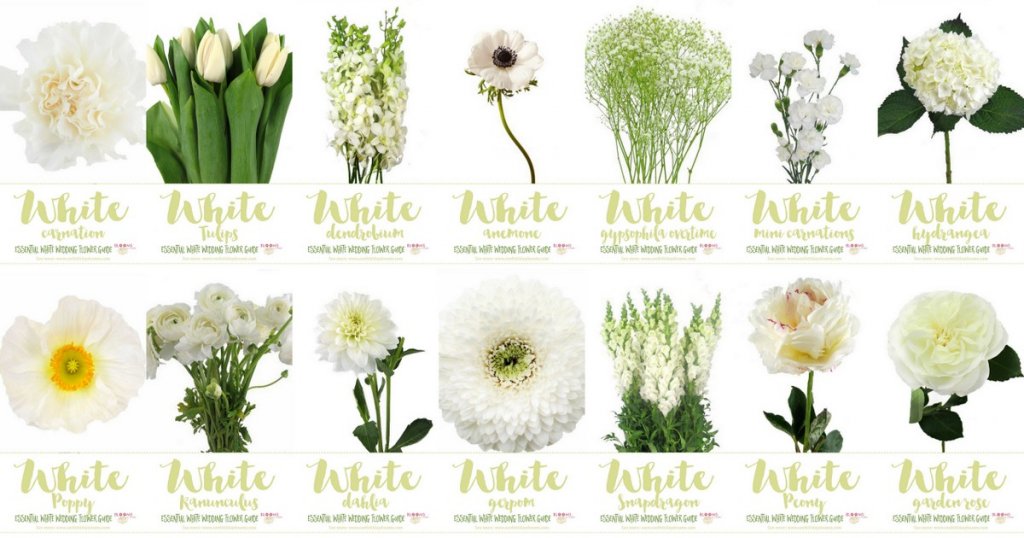Flowers, in their myriad forms and colors, have always been a source of joy and tranquility, offering a serene escape into the wonders of nature.
Among the diverse spectrum of blooms, white flowers hold a special place, embodying elegance, peace, and purity.
White flowers, ranging from the delicate Jasmine to the majestic Magnolia, offer a sense of calm and serenity that is unparalleled.
Their ability to blend seamlessly with other colored blooms creates stunning bouquets, perfect for a myriad of occasions.
In this article, we will delve into the enchanting world of white flowers, exploring their unique characteristics and the charm they bring to gardens and floral arrangements.
Whether it’s the sophisticated White Orchids, the graceful Calla Lily, or the cheerful Daffodils, each of these flowers contributes to the tapestry of nature in its own special way.
We will discover how these flowers, beyond their visual appeal, symbolize purity, elegance, and sometimes even sympathy, making them a versatile choice for events ranging from joyful celebrations to solemn commemorations.
1. Japanese Anemone

Japanese Anemone stands out as a captivating and elegant addition among the types of white flowers.
Renowned for its simple yet striking beauty, this perennial is particularly valued for its late summer to fall blooming period, providing a fresh wave of color when many other plants begin to fade.
The Japanese Anemone typically features large, cup-shaped white flowers, each set off by a cluster of golden-yellow stamens at the center, creating a delightful contrast against the dark green foliage.
These blossoms, often rising above the foliage on slender yet sturdy stems, sway gracefully in the breeze, adding a sense of movement and delicate charm to any garden setting.
Thriving in zones 4-8, they are well-suited to a variety of garden settings, including borders and woodland gardens.
2. Jasmine

Celebrated for its captivating fragrance and delicate, star-shaped white flowers, Jasmine is a versatile and enchanting climber.
Perfect for adorning arbors and fences, it adds a layer of elegance to any garden space.
Blooming profusely in summer and spring, Jasmine thrives in zones 8-10.
Varieties like Jasminum Sambac ‘Grand Duke of Tuscany’ are known for their semi-evergreen foliage and robust growth, reaching heights of 18-30 feet.
This makes them not just a visual treat but also a significant contributor to the garden’s sensory experience.
Their persistent blooms and ability to cover large areas make them ideal for creating a natural, fragrant canopy or living wall in outdoor spaces.
3. Camellia
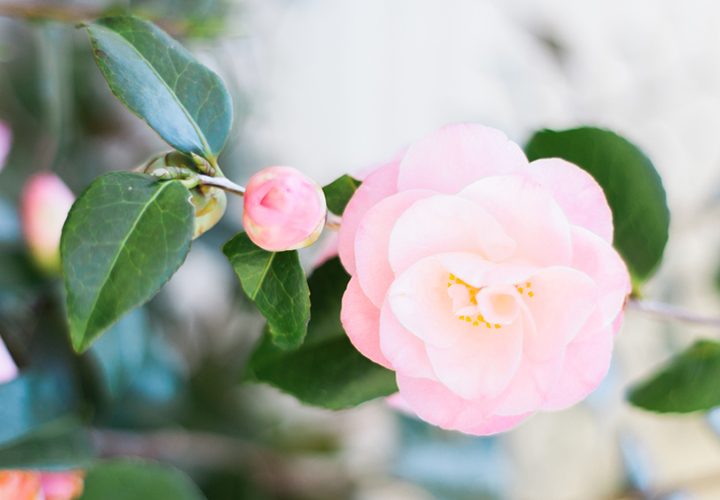
A staple in fall and winter gardens, Camellias are renowned for their large, peony-like blooms.
They flourish in zones 8-10 and are known for their distinct, spiral-shaped, ruffled petals, which create an eye-catching display.
Cultivars like ‘Chine Clay’ and ‘Snow Flurry’ showcase elegant white flowers that stand out against their lush green foliage.
These hardy blooms are adaptable to various temperature conditions, making them a versatile choice for gardeners.
Camellias are not just admired for their aesthetic appeal but also for their ability to bloom during the cooler months, providing a much-needed splash of color and vibrancy when most other plants are dormant.
4. Calla Lily
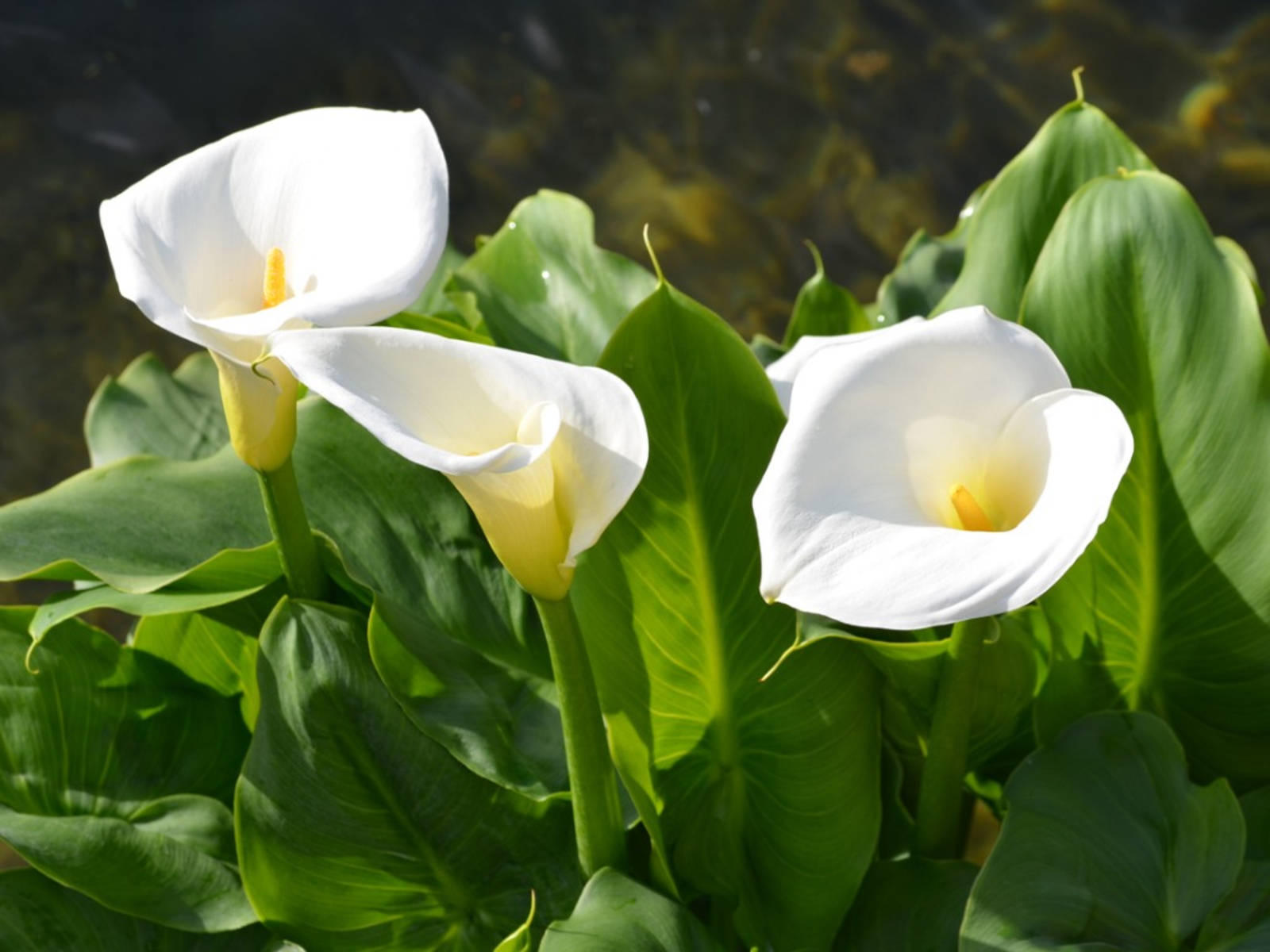
The Calla Lily is a symbol of grace and sophistication with its unique trumpet-shaped flowers.
Predominantly used as centerpieces, these white flowers bring a striking elegance to any floral arrangement.
They flourish in late spring to early summer, ideally suited for zones 9-10.
Varieties such as Green Goddess and Mint Julep exhibit white blooms with subtle shades, lending an air of refinement to garden landscapes.
These flowers are not only visually stunning but also represent purity and rebirth in various cultures, making them a popular choice for weddings and ceremonial events.
Their sleek and smooth texture, combined with a strong stem, makes them a favorite in both garden settings and as cut flowers in vases.
5. White Orchids
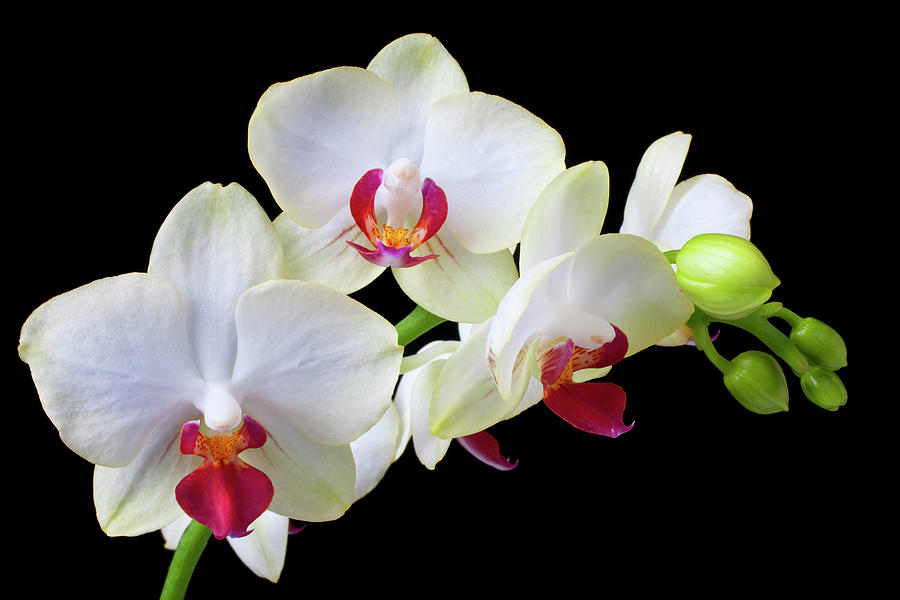
Orchids, with over 1000 types of white flowers, are a symbol of exotic beauty and purity.
These captivating blooms are noted for their serene white shades complemented by contrasting centers in yellow or pink.
Ideal for zones 8-13, white orchids such as the Phalaenopsis are versatile as indoor plants, adding a touch of sophistication to any interior space.
Their long-lasting blooms and architectural form make them a popular choice for modern and minimalist decor styles.
Orchids require specific care and attention, thriving in well-drained soil and humid conditions, making them a rewarding challenge for indoor gardeners.
The elegance and exotic appearance of white orchids makes them a symbol of luxury and refined taste in floral arrangements.
6. Chrysanthemums

Chrysanthemums, affectionately known as ‘mums’, are a beloved feature of fall gardens.
These flowers offer a vibrant array of colors, including striking whites.
The globular variety, like the Spider Mum, is notable for its numerous tiny petals, creating a dense and textured appearance.
Thriving in zones 5-10, these flowers are not just a visual spectacle but also a symbol of joy and longevity in various cultures.
Chrysanthemums are versatile, suitable for garden beds, container gardens, and as show-stopping cut flowers.
Their ability to bloom in the cooler fall months makes them invaluable for extending the garden’s color palette into the later part of the year.
Additionally, their varied forms, from pompons to daisy-like flowers, offer a range of styles for gardeners and floral designers.
7. Daffodils

Daffodils are quintessential spring flowers, bringing cheer with their white petals and distinctive yellow trumpets.
These blooms vary in size, making a striking visual impact in any spring garden.
Thriving in zones 8-12, their varieties, like Bridal Crown and Ice King, feature enchanting double-ruffled petals.
Daffodils are more than just a garden plant; they hold a special place in literature and art, symbolizing rebirth and new beginnings.
Planting these flowers in clusters creates a stunning display that heralds the end of winter.
Their low maintenance and resilience make them a favorite among gardeners, and their ability to naturalize means they will return year after year, filling gardens with their bright, joyful blooms.
8. White Tulips
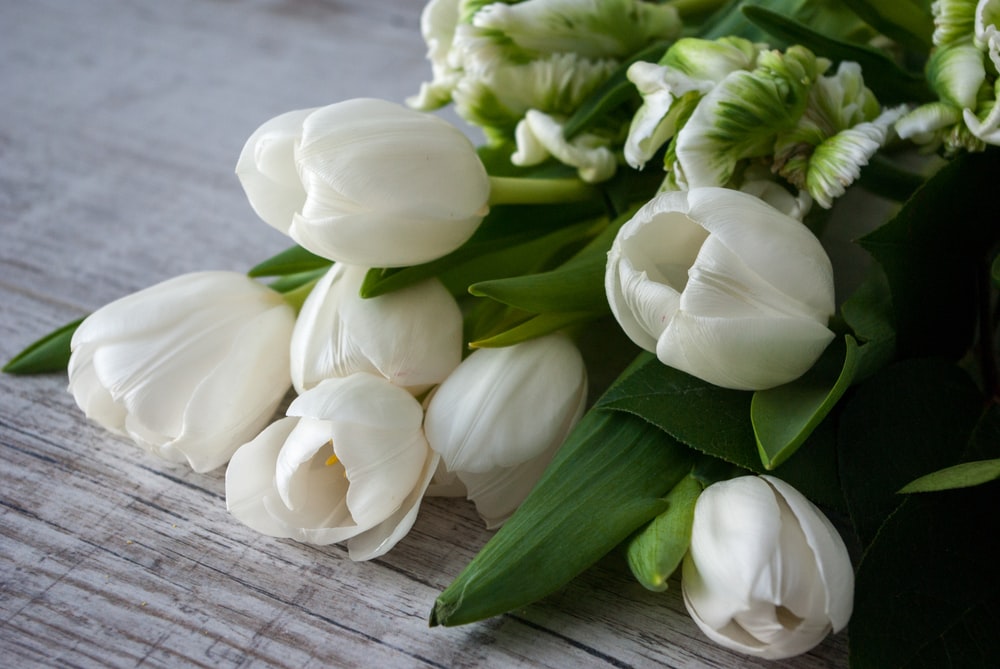
White Tulips are synonymous with the onset of spring, showcasing elegance with their cup-shaped blooms atop long stems.
These flowers, thriving in zones 4-8, come in various shapes and shades, including intriguing oval-shaped petals.
Cultivars like Ice Follies and White Triumphator are celebrated for their pristine white blooms, which stand out with vibrant contrasting colors.
Tulips, one of the most beloved types of white flowers, are not just garden beauties but also carry deep symbolic meanings, often associated with purity and love.
They are a popular choice for spring weddings and events.
Planting them in groups or along borders can create a stunning visual impact, making them a versatile choice for both formal and informal garden designs.
9. White Hibiscus
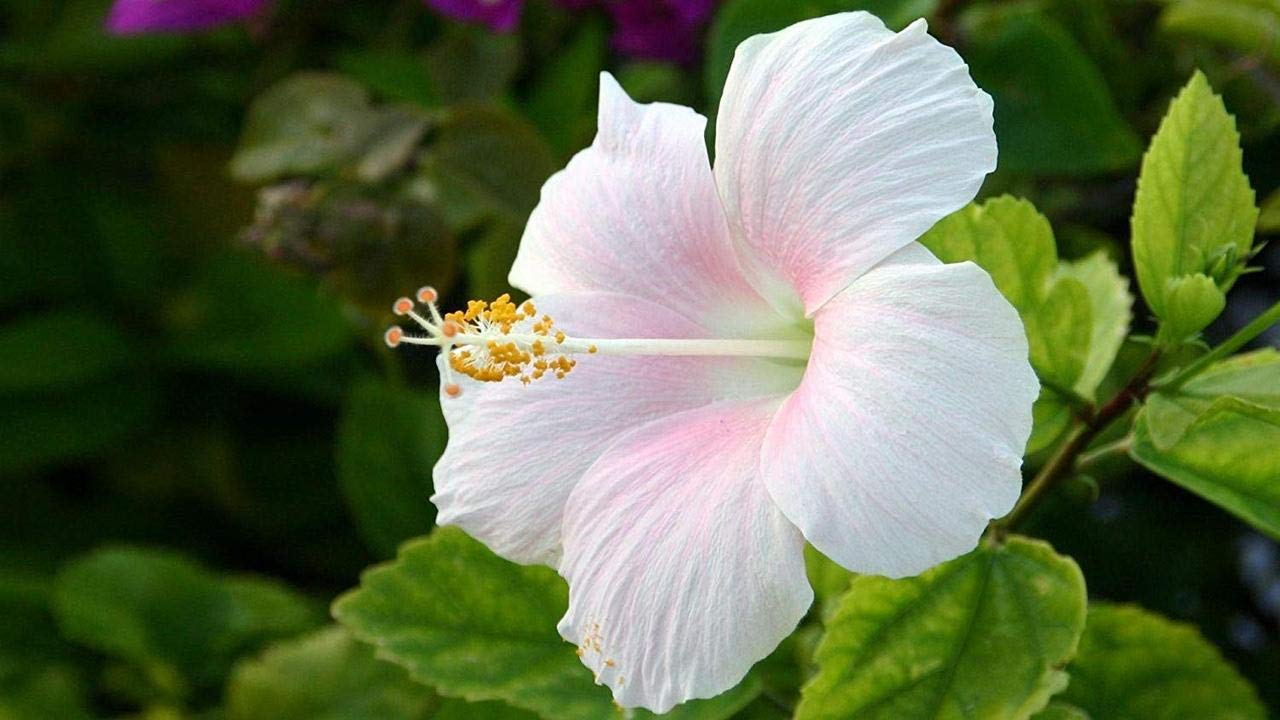
White Hibiscus, or the Rose of Sharon, is a flowering shrub known for its large, striking blooms.
These trumpet-shaped flowers with papery petals are a standout feature in any garden, flourishing in zones 4-8.
The Hibiscus is not just admired for its beauty but also for its ease of care, making it a popular choice among gardeners of all skill levels.
The large, showy white flowers, often accompanied by vibrant pink, red, or purple hues, offer a tropical flair to temperate gardens.
These flowers are not only visually appealing but also attract pollinators like bees and hummingbirds, adding life and activity to the garden.
Planting White Hibiscus in sunny spots can transform an ordinary garden into an exotic retreat.
10. Carnation

Carnations, with their ruffled petals, are a classic in the floral world.
There are over 300 species of this flower, existing as both annuals and perennials.
Known for their long, leafy stems, Carnations can grow between 9-10 inches tall, sometimes taller.
These flowers, thriving in zones 5-8, are not just a visual treat but also emit a delightful fragrance.
White cultivars like Coconut Surprise and Arctic Fire are especially cherished for their elegant appearance and versatility.
Carnations are a staple in bouquets and floral arrangements due to their long-lasting nature and the rich symbolism they carry, often representing love and fascination.
Their ability to adapt to various soil types and conditions makes them a popular choice for gardeners and florists alike.
11. Amaryllis

The Amaryllis flower is known for its spectacular, large, and showy blooms.
Growing on tall stems, these flowers can reach up to 2 feet in height, creating an impressive display.
Suitable for zones 3-10, Amaryllis blooms in vivid colors like white, pink, and orange, bringing a bold statement to any space.
The varieties with double flowers, such as Christmas Gift and Mont Blanc, are particularly attractive, offering a unique and eye-catching appearance.
Amaryllis is not just a garden plant but also a popular indoor bloom, often associated with the holiday season.
They are easy to grow from bulbs and can fill a room with their beauty and charm, making them a favorite for adding a touch of elegance to home decor.
12. White Rose
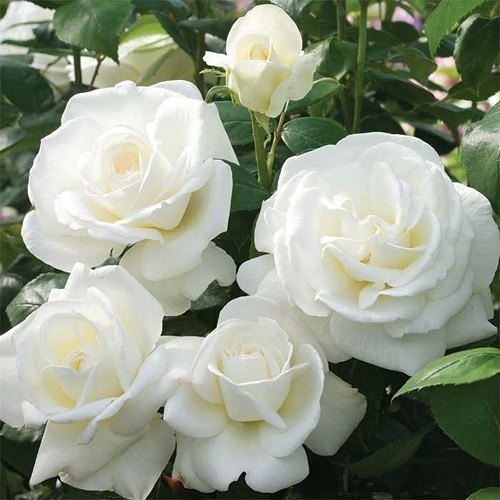
Roses, synonymous with love and romance, come in over 1000 varieties, with white roses often chosen for weddings and symbolizing new beginnings.
These perennial plants, thriving in zones 4-9, vary from climbing to bushy types.
White roses like Claire Austin and Susan Williams-Ellis are known for their creamy-white blooms, sometimes featuring a vibrant yellow center.
Their large petals, which may open fully, add a touch of classic elegance to any setting.
White roses are not just visually appealing but also have a captivating fragrance, making them a popular choice for gardens, bouquets, and special occasions.
13. Magnolia

Magnolias are majestic, climate-dependent shrubs and trees known for their perennial and evergreen or deciduous nature.
Blooming in spring and summer, Magnolias fill gardens with stunning beauty and fragrance.
Their white and pink flowers, some with cup-shaped petals and others with backward-curving petals, make a spectacular floral display.
Cultivars like Gold Star and Ivory Chalice thrive in zones 4-9, offering a breathtaking addition to any landscape.
Magnolias are not just admired for their blooms; their large, glossy leaves and architectural form make them a focal point in gardens, providing year-round interest.
14. Lily of the Valley
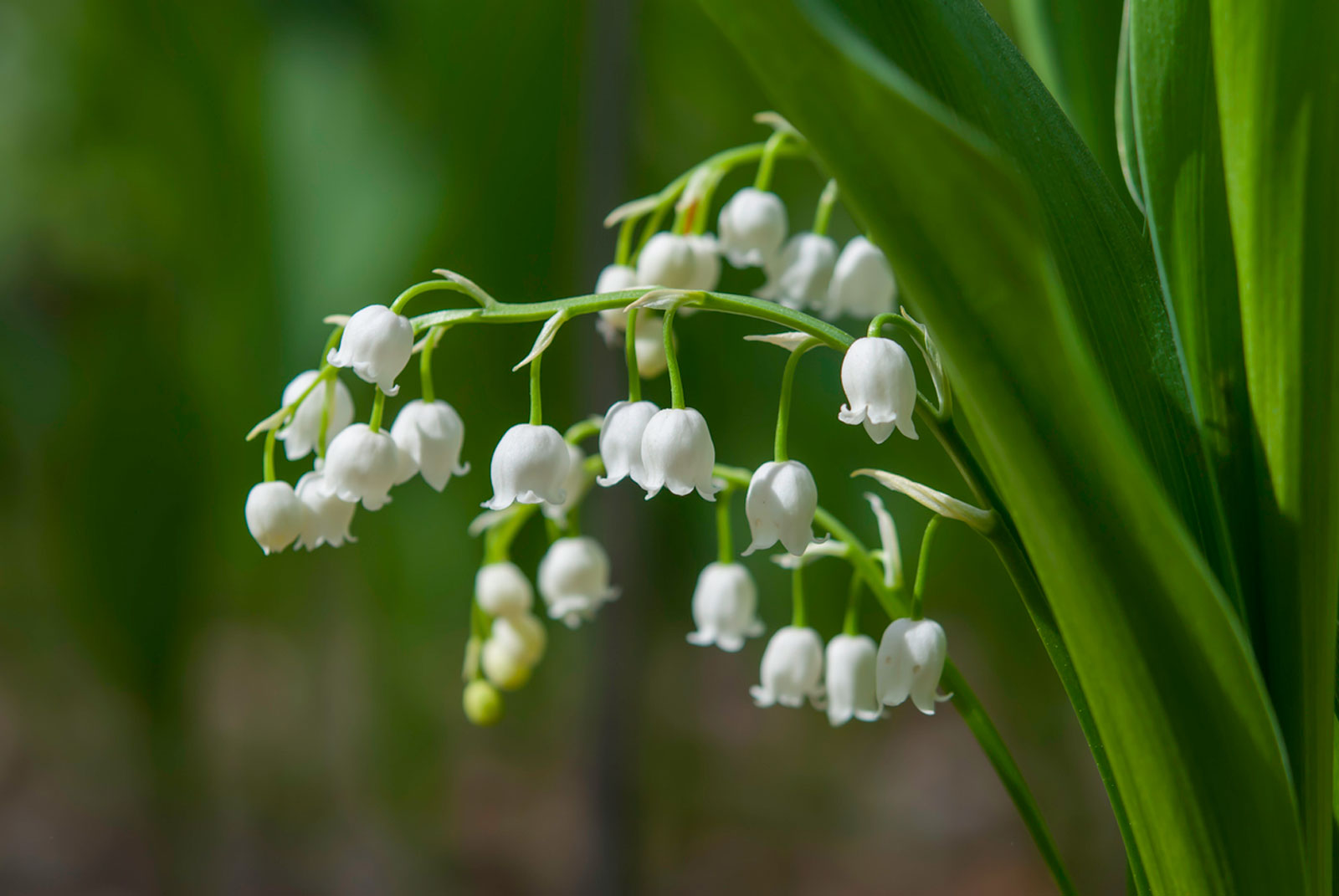
Lily of the Valley is a charming flower with delicate white bell-like blooms.
Each stem, reaching 7-12 inches in height, can have more than 12 flowers, creating a fabulous display.
Thriving in zones 2-8, this low-growing plant blooms in late spring.
Cultivars like Albostriata and Bordeaux are particularly sought after for their exquisite beauty.
Lily of the Valley is famed for its use in bouquets, especially at weddings, and holds a special place in many cultural traditions.
Its sweet fragrance and dainty appearance make it a favorite for garden borders and woodland settings.
15. Heliotrope
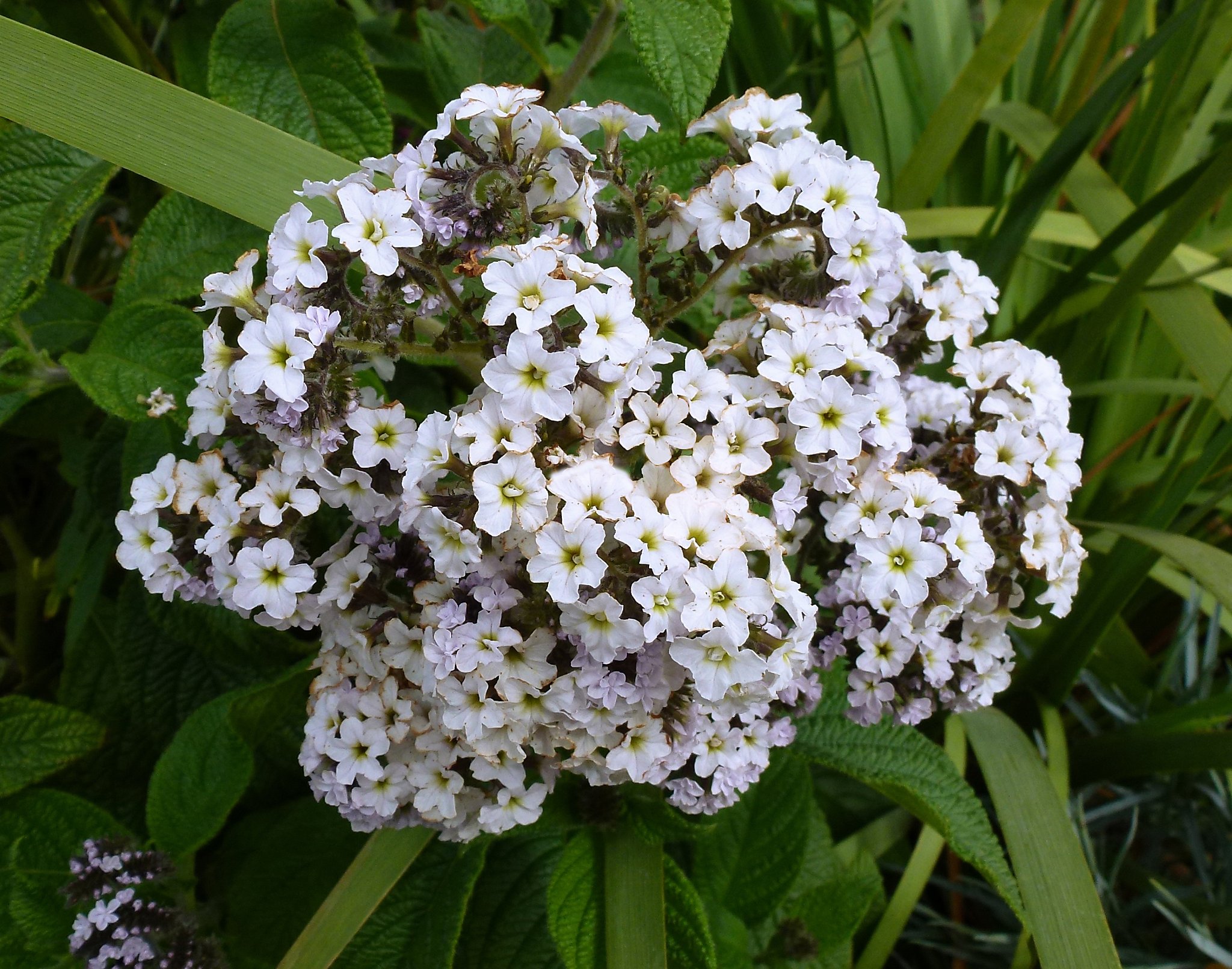
Heliotrope is a unique addition to the garden, known for its bushy annual growth and clusters of tiny, fragrant flowers.
These star-shaped blooms, flourishing in zones 8-11, are particularly loved for their intense aroma and vibrant presence.
The heliotrope is not just a visual delight but also a sensory experience, often used in perfumery and aromatherapy.
Planting heliotrope in a garden can create a colorful ground cover, especially in summer, attracting bees and butterflies.
Its rich fragrance intensifies in the evening, making it a perfect choice for patios and outdoor seating areas where its scent can be fully enjoyed.
16. Gerbera Daisy

The Gerbera Daisy is renowned for its large, striking flowers, often acting as the focal point in floral displays.
These blooms, which grow well in zones 9-10, are not just large but also vibrantly colored, with some featuring yellow and pink centers.
The Gerbera Daisy is a symbol of cheerfulness and innocence, making it a popular choice for bouquets and as a gift flower.
The wide range of colors available, including pure white, allows for versatile use in various design themes.
Gerbera Daisies are relatively easy to grow and maintain, making them a favorite among both novice and experienced gardeners.
17. Hydrangea
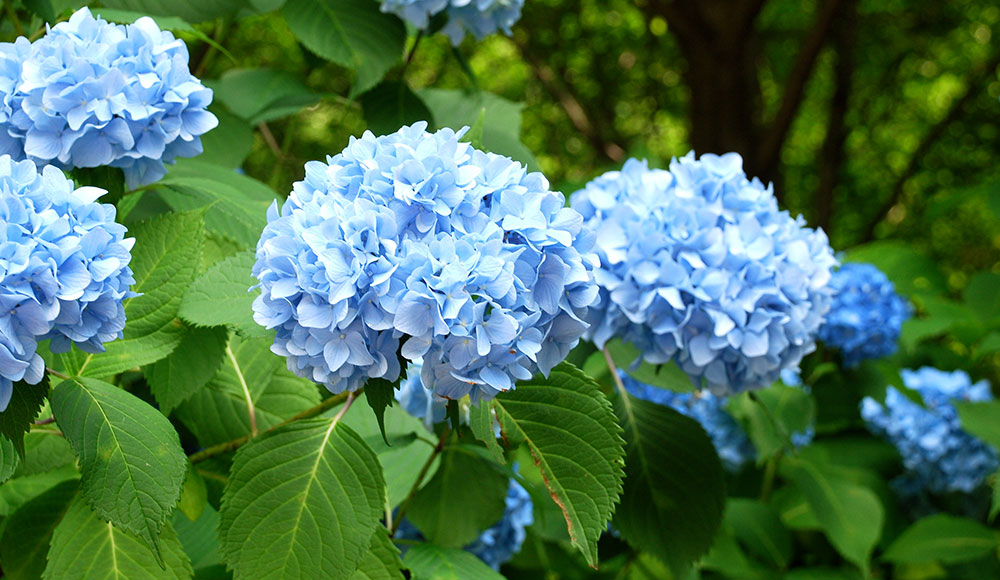
Hydrangeas are renowned for their large, globular flower heads, making them a staple in summer gardens.
These perennial shrubs, which thrive in zones 4-9, can grow 4-5 feet tall and spread up to 6 feet.
The Hydrangea’s blooms, particularly the white varieties like Snowflake and Grandiflora, are not just beautiful but also change color based on the soil pH, adding an element of surprise to the garden.
They are perfect for creating a lush, romantic look in garden borders or as a standalone feature.
Additionally, hydrangeas are popular in cut flower arrangements for their voluminous and elegant blooms.
18. Gladiolus
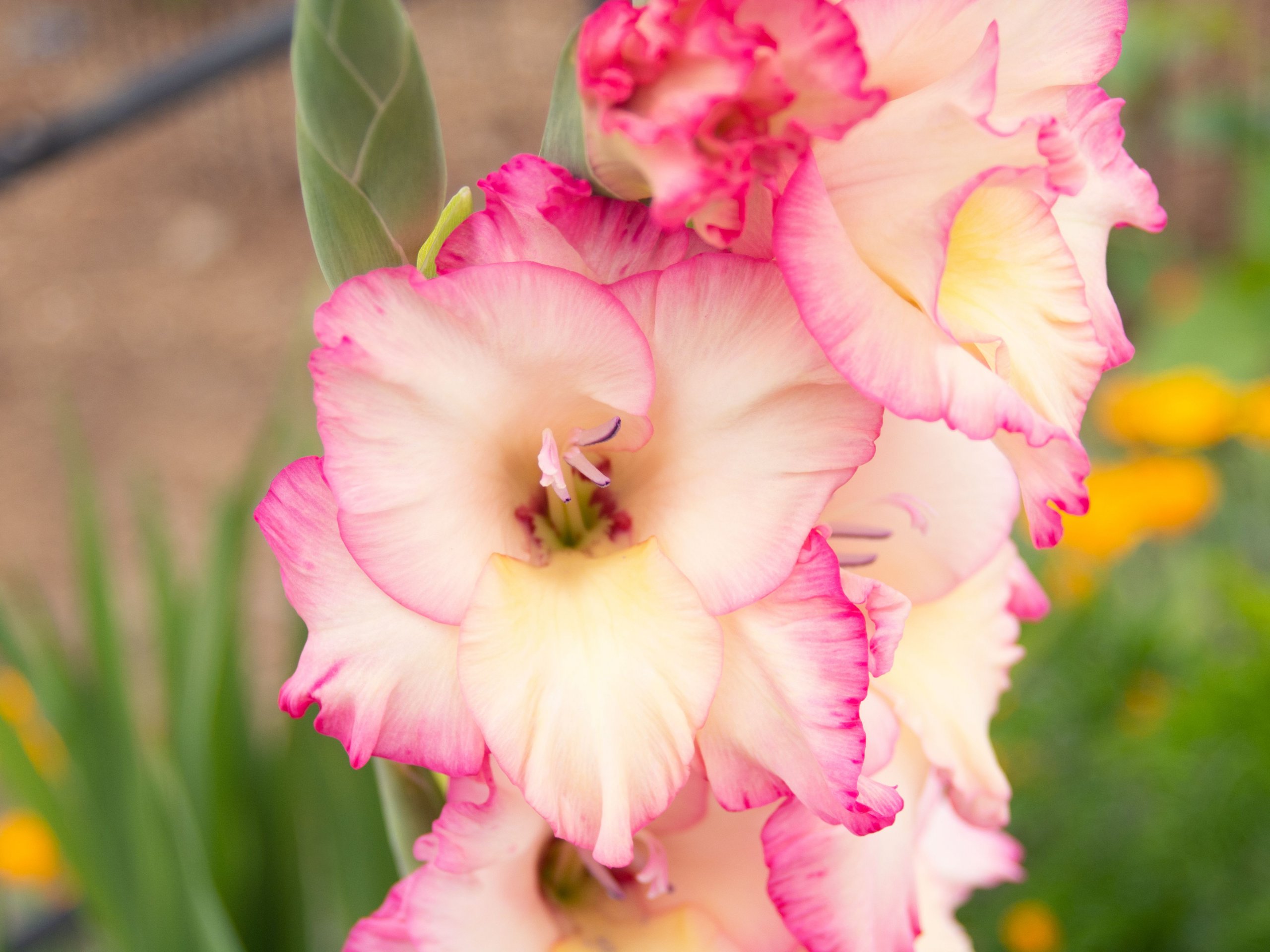
Known as Sword Lilies, Gladiolus plants are characterized by their tall spikes and trumpet-shaped flowers.
These plants, ideal for zones 9-11, produce vibrant and colorful blooms, making them a striking addition to any garden.
They are particularly known for their long flowering tops, which make them a popular choice for cut flower arrangements.
Gladiolus flowers come in a variety of colors and are easy to grow, requiring minimal care.
Planting them in rows or clusters can create a stunning visual impact, and their height makes them an excellent backdrop for shorter plants in the garden.
19. Clematis

Clematis is a magnificent flowering climbing plant, perfect for adding vertical interest to any garden.
Growing rapidly, some varieties can reach up to 10 feet, making them ideal for covering trellises, walls, and fences.
The flowers, often star-shaped and sometimes double, add a layer of beauty with their large, white blooms.
Thriving in zones 8-11, Clematis is not just a climber but a versatile plant that can also be grown in containers.
The combination of lush green foliage and striking white flowers creates a stunning contrast, making it a favorite among garden designers.
20. Phlox
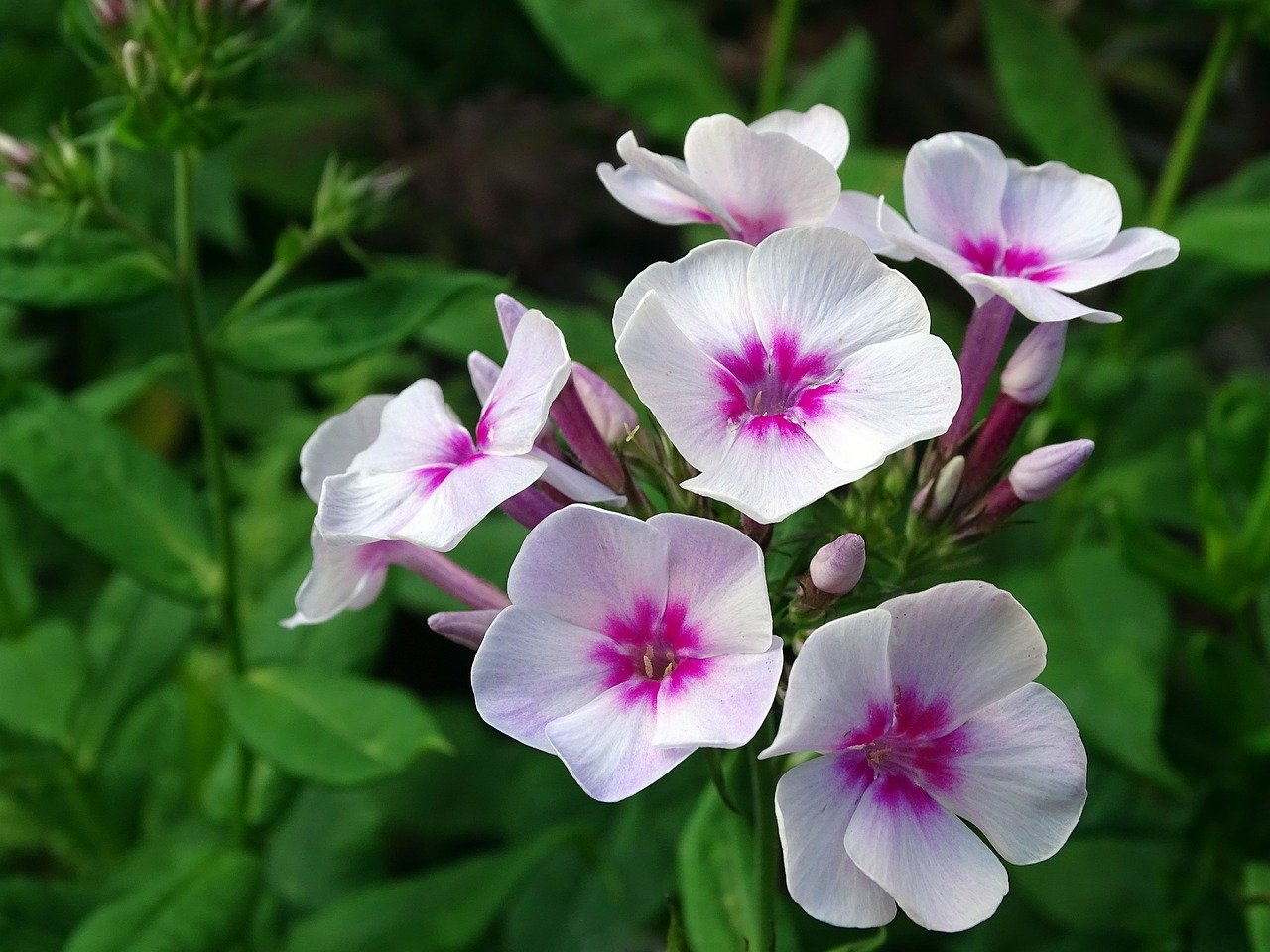
Phlox, with its small, ground-covering habit, is a charming addition to any summer garden.
These plants, flourishing in zones 4-7, produce beautiful small white flowers that can create the illusion of a snow-covered ground when planted in abundance.
Phlox is a low-maintenance plant, making it suitable for experienced and novice gardeners.
Its ability to spread and cover ground quickly makes it an excellent choice for filling gaps in the garden or for use in rockeries and borders.
21. Snowdrops
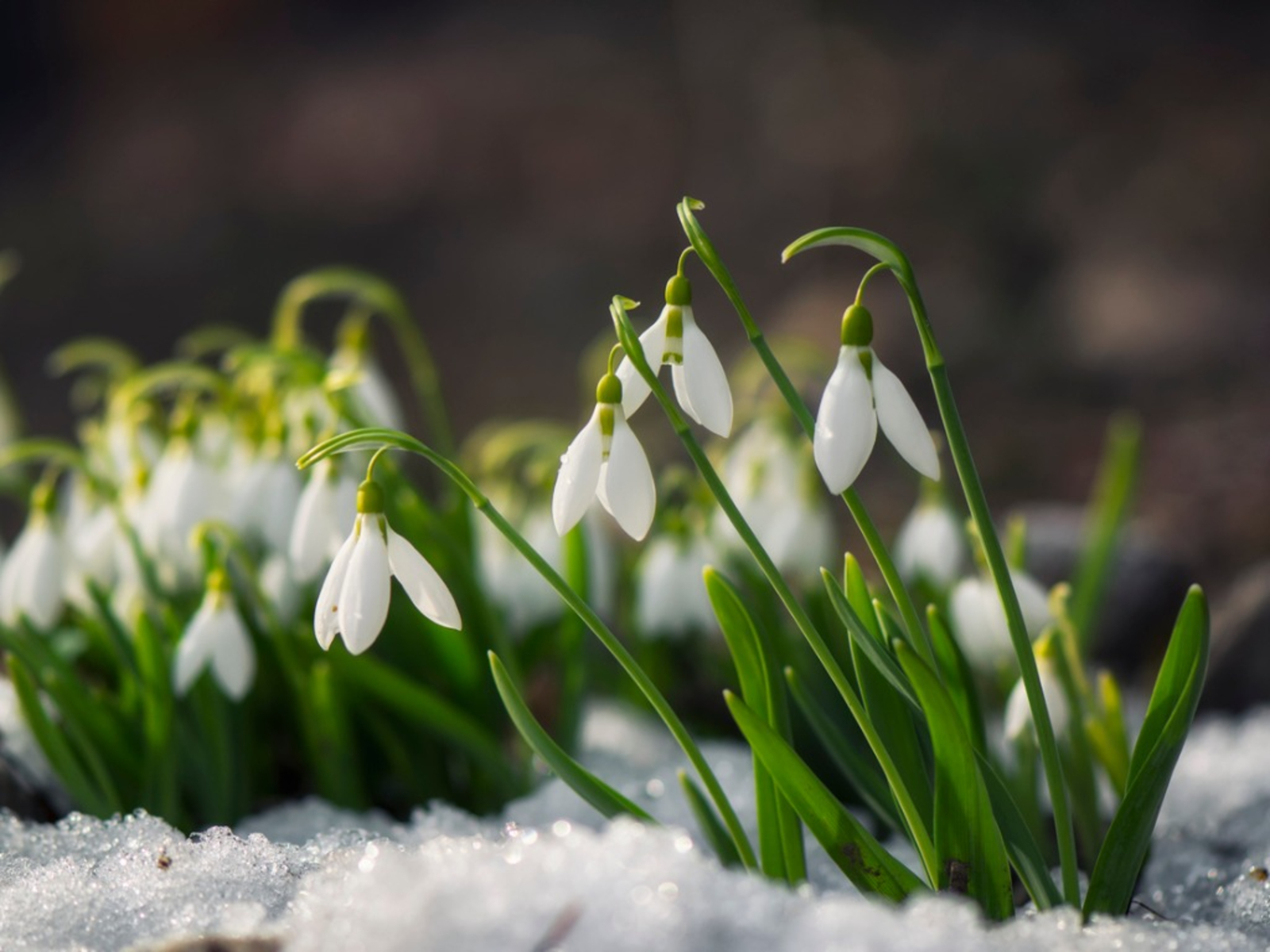
Snowdrops are dainty, perennial flowers that herald the end of winter.
These small blooms are among the first to appear in the garden, often pushing through the last of the winter snow.
Growing in zones 4-8, Snowdrops are not just a sign of the coming spring but also a symbol of hope and renewal.
Their delicate white flowers hang gracefully from slender stems, creating a carpet of white when planted in large numbers.
Snowdrops are easy to grow and naturalize, making them a wonderful choice for woodland gardens or naturalized areas.
Conclusion
In conclusion, the types of white flowers offer an exquisite array of choices for gardeners, florists, and nature enthusiasts alike.
Each flower, from the serene Lily of the Valley to the vibrant Gerbera Daisy, not only enhances the beauty of its surroundings but also brings its own set of meanings and symbolism.
These flowers, thriving in a variety of climates and conditions, demonstrate the diversity and adaptability of nature’s creations.
Whether used in wedding bouquets, as a sign of sympathy, or simply to brighten a corner of a garden, white flowers have a universal appeal that transcends cultures and preferences.
Their role in different cultural and ceremonial contexts highlights their importance across various aspects of human life.
In essence, white flowers are not just a part of our gardens and bouquets; they are a symbol of life’s simple pleasures and the enduring beauty that surrounds us.

